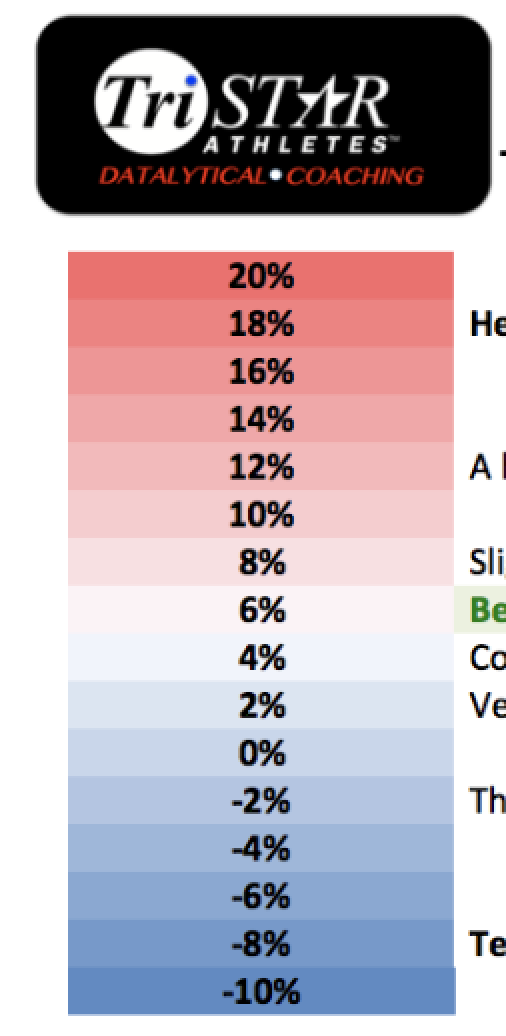Positive Decoupling - of heart rate to power or pace outputs.
This is a way of measuring output-input relationship changes that take place during a workout or race as a way of determining aerobic fitness. For this metric to provide useful information the workout or segment must have been fully aerobic (below the lactate/anaerobic threshold) and steady (low Variability Index).
What the software does here is compare the Efficiency Factors for the two halves of the workout or selected workout segment (such as an interval or longer effort). The difference between the EF for the first half and the EF for the second is divided by EF for the first half. This produces a percentage of increase or decrease in the second-half EF.
“Cliff notes: Not all decoupling is “bad” in fact a level of decoupling will happen on most sessions where you are trying to improve an output. Example a time trial where you are testing pace or power. Longer endurance efforts for the sake of training this becomes more important to see “less” decoupling. If we are looking at decoupling at a much shorter time period (or interval) example 2-5minutes, the following considerations should be in place; If decoupling is VERY high then the effort is either VERY hard or the aerobic base is not in a good place and more heart rate work is needed. If the decoupling is low or < 6% this shows good aerobic capacity at shorter harder efforts and more pace and power work can be considered. ”
Negative Decoupling - of heart rate to power or pace outputs.
When athletes have a strong aerobic base development (From many years of endurance training or high CTL - continuous training loads or > a CTL of 90 and upwards of 150+) They can actually see a negative decoupling rate. This means for steady Zone 2 work the heart rate may drop while power or pace may go up or faster. Depending on your goals and time training cycle your coach will indicate whether its more beneficial to hold for heart rate or power. It is important to note that decoupling rates are key only for steady outputs with minimal stop time and for the sake of comparison to similar sessions this must be the case as well.

